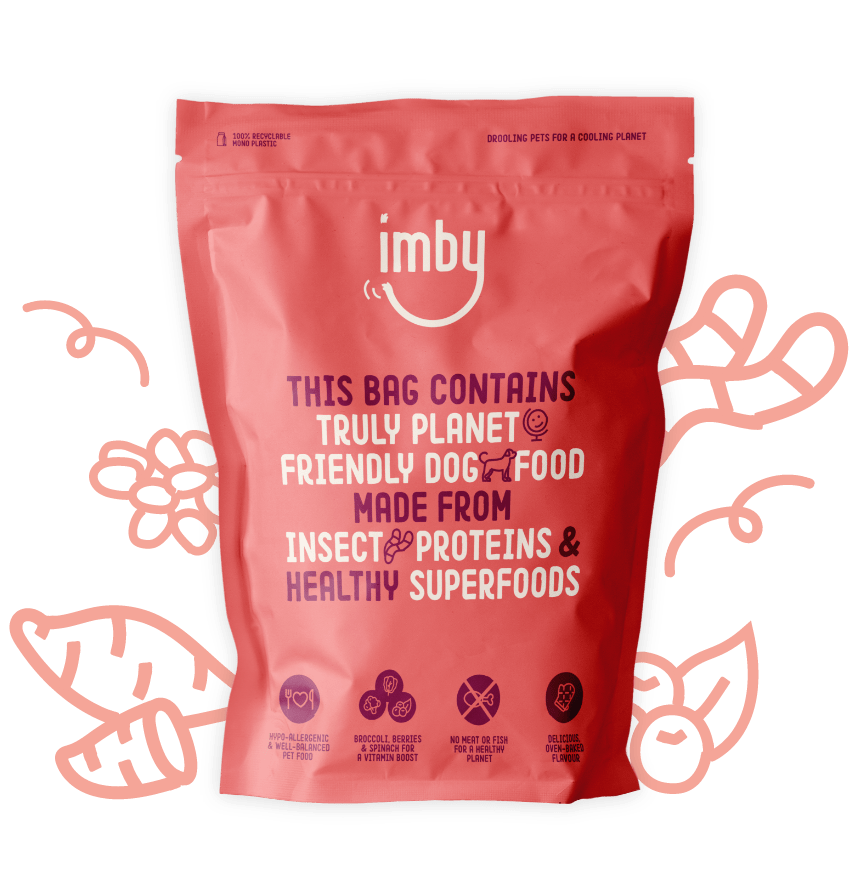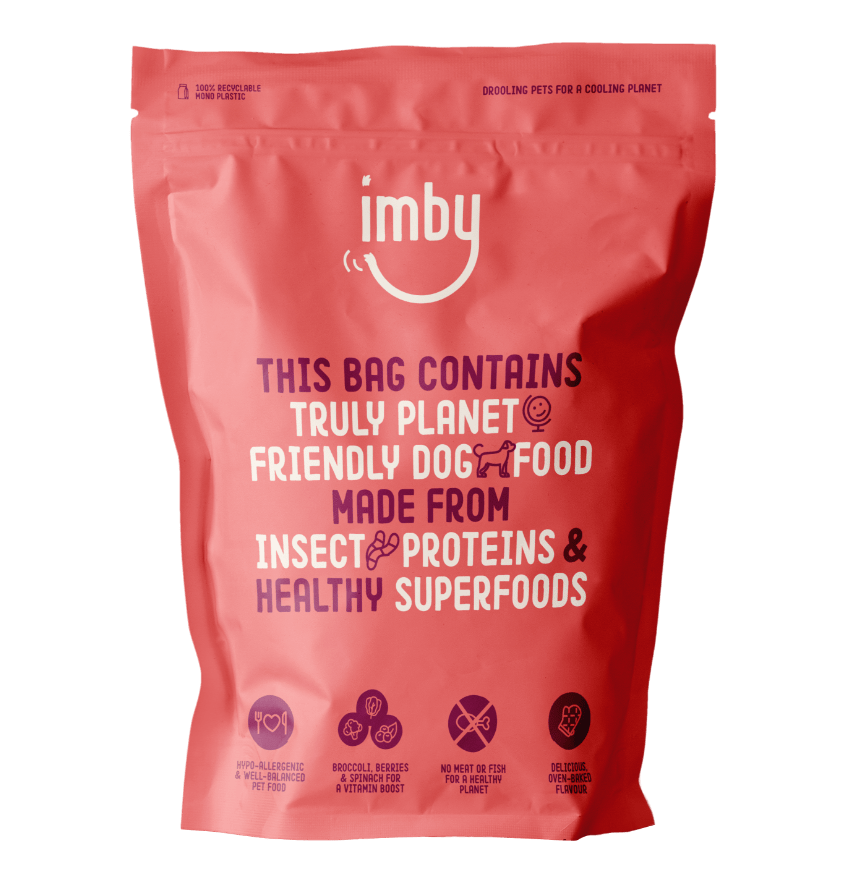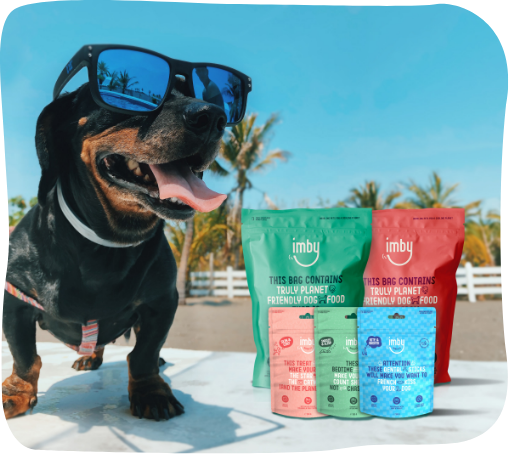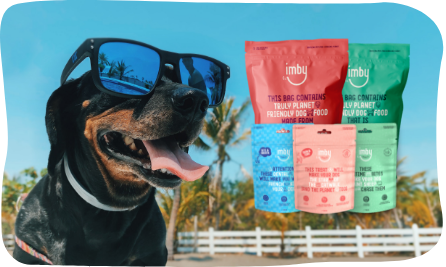Use code CHANGE20 for 20% off your first dog food order!
Use code CHANGE20 for 20% off your first dog food order!



Most dogs are easy eaters, aren’t they? It’s rare for a four-legged friend to turn away from their food bowl when it’s time to eat. However, some dogs can struggle with sensitive stomachs, itching, skin irritations, or may need a special diet to manage food allergies—hypoallergenic dog food could be the solution.
In this post, you’ll learn all about allergies and discover the key characteristics that make dog food hypoallergenic.
Is Your Dog Constantly Licking Its Paws or Scratching Its Ears? If so, your four-legged friend may be suffering from a food allergy.
In dogs, a food allergy occurs when their immune system reacts negatively to certain proteins in their diet, leading to allergic symptoms. The most common signs include itching, skin issues, and digestive problems such as diarrhoea or vomiting. As a caring dog owner, spotting these symptoms early can help you take the right steps to keep your pup happy and healthy.
A food allergy is an unusual reaction of the immune system to certain nutrients in food, known as allergens. These allergens are proteins commonly found in ingredients like chicken, beef, or lamb. During digestion, these proteins are absorbed into the intestinal wall and come into contact with the immune system; this triggers the production of antibodies, which then cause a reaction in the body.
As a result, the release of substances can lead to symptoms such as itching and digestive issues.
Dogs can have two types of adverse reactions to food: those caused by the immune system and those that are not. When the immune system reacts to a food ingredient, it is called a food allergy. If the reaction happens without involving the immune system, it is known as a food intolerance.
Over the past 30 years, researchers have studied which ingredients are most likely to trigger allergic reactions in dogs. Their findings are remarkably consistent: more than 75% of cases are caused by animal proteins, while around 15% are linked to wheat.
The biggest culprits for dogs with allergies include beef, chicken, dairy products, and eggs. Many people assume that all grains cause allergic reactions, but this isn’t entirely accurate. Scientific research suggests that wheat is the main concern, whereas other grains like rice and oats are usually well tolerated and can be included in hypoallergenic dog food.
It’s also worth noting that dogs can be allergic to multiple ingredients at once. For instance, a dog with food allergies may react to a combination of beef, chicken, and wheat. Identifying and eliminating all triggers is key to managing their symptoms effectively.
https://www.ncbi.nlm.nih.gov/pmc/articles/PMC4710035/table/Tab1/?report=objectonly
Hhypoallergenic dog food is specially formulated for dogs with sensitivities to specific ingredients. The term “hypoallergenic” refers to food that contains minimal allergens, with less than 2% of pets showing any adverse reaction to it.
There are two types of hypoallergenic dog food:
Hypoallergenic dog food consisting of a unique protein source: This type of food avoids common allergens such as chicken, beef, lamb, and dairy, which are more likely to trigger allergic reactions in dogs. Instead, it uses alternative ingredients, like insect proteins or vegetable-based ingredients, that carry a lower risk of causing sensitivities. Even rarer meats, like kangaroo or wild game, can be used as alternative protein sources. This type of food is complete and suitable for dogs that don’t show allergic symptoms as well.
Hypoallergenic dog food consisting of hydrolysed proteins: This food works by breaking down proteins into very small pieces through special enzymes. The smaller the protein pieces, the less likely they are to be recognised as allergens by your dog’s immune system, significantly reducing the risk of allergic reactions. However, the size of the protein pieces is important – the smaller they are, the better. Since this isn’t always specified on the packaging, a safer option is to go for hypoallergenic food made with a unique protein source.
Imby Pet Food’s snacks and dog treats are crafted with nutritional recipes that focus on a single animal protein source. Our recipes are designed to minimise the risk of allergic reactions, as they exclude common allergens like beef, dairy, chicken, wheat, and lamb. While our meals are specifically formulated to be hypoallergenic, it’s important to note that no dog food can offer a 100% guarantee of preventing all allergic reactions; this is because each dog is unique and may react differently to various protein sources.
One of our recipes is a hypoallergenic dog food made with a single animal protein source— insect protein. This recipe is complemented by nutrient-rich ingredients like sweet potato, broccoli, blueberries, spinach, and other superfoods, making it a highly nutritious option. With less than 2% of dogs showing an allergic reaction to insect protein, it is a great choice for dogs needing hypoallergenic food. In fact, insect protein is three times richer in protein than fresh chicken breast! Offering a healthy and complete meal for dogs of all breeds. This recipe does not require additional supplements, making it a perfect choice even for dogs that are not prone to allergies.
Another of our recipes is allergen-free dog food based on vegetable proteins. This variety is completely free from animal ingredients, wheat, and barley, ensuring it fits perfectly within the hypoallergenic category. Given that dogs are omnivores, they can thrive on a plant-based diet. Imby’s vegetable protein recipe features ingredients such as sweet potato, pumpkin, blueberries, cranberries, spinach, and olive oil. This option comes with a low risk of allergic reactions and is ideal for dog owners who are conscious about animal welfare and the environment. While plant-based food dramatically reduces the chance of allergies, it’s important to note that individual sensitivities can still vary.
Many vets are enthusiastic about the anti-allergy properties of dog food, particularly those containing insect protein.
One major advantage is that insects are a new protein source, meaning no allergies have been linked to them so far. As a result, the proteins do not need to be hydrolysed to prevent allergic reactions, allowing insect proteins to remain unprocessed and retain their full nutritional value.
Another benefit is the high nutritional content: insects provide three times more protein than fresh chicken breast, and they contain all ten essential amino acids that a dog needs. Additionally, they are rich in fatty acids, vitamins, and minerals, making them an excellent alternative to meat or fish and a great choice for hypoallergenic dog food.
Finally, using insects in dog food is far more sustainable and animal-friendly than traditional meat production. Did you know that 20% of global meat production is consumed by pets? This contributes significantly to climate change, with notable impacts on greenhouse gas emissions, water consumption, land use, and biodiversity loss. In contrast, insects are grown on waste products from human consumption, and their short life cycle makes them incredibly efficient at producing protein.
Hypoallergenic dog food is designed with one key feature in mind: it contains proteins that are low risk for allergies. That said, these proteins are just as nutritious as those found in regular dog food.
In fact, some hypoallergenic proteins, such as insect protein, offer added benefits. They are highly concentrated in protein, contain all the essential amino acids, and are low in carbohydrates. This can help support your dog’s weight management.
Similarly, plant-based hypoallergenic foods tend to have fewer calories than those made with insect protein.
So, whether your dog has allergies or not, hypoallergenic dog food can be a great option. It’s suitable for all dogs looking for a balanced, nutritious diet.
As mentioned earlier, certain grains are known to trigger allergic reactions in some dogs. Wheat and barley are two of the most common culprits, with over 15% of allergy-prone dogs reacting negatively to them. Therefore, it’s important to ensure that these grains are excluded from your dog’s diet.
Other grains, such as rye, spelt, maize, and rice, can also cause allergic reactions in certain breeds, though these cases are less common than with wheat or barley.
That said, grains can still offer nutritional value. They’re rich in protein, vitamins, and minerals, and often contain less fat than many meats, which can be beneficial for your dog’s diet.
In summary, hypoallergenic dog food should focus on avoiding common allergens such as animal proteins, dairy products, barley, and wheat.
While any dog can develop an allergy, some breeds are more predisposed due to genetic factors. Breeds that tend to be more sensitive to allergens include: (French) Bulldogs, American Pitbull Terriers, Bichon Frises, Boxers, Brussels Griffons, Bull Terriers, Cocker Spaniels, German Shepherds, Golden Retrievers, Labrador Retrievers, and Maltese.
If you own one of these breeds, it’s important to keep a close eye on their diet from the start, as they may be more susceptible to allergic reactions throughout their life. It’s a smart move to start them on allergy-friendly dog food early to help minimise the risk.
Food allergies can develop at any age. Typically, allergic symptoms begin to appear when your dog is around 6 months old, often peaking after the first or second year of life. While allergies are most commonly seen in younger dogs, older dogs can also develop intolerances later on.
Dogs aren’t born with food intolerances, but the risk of developing one increases when they are repeatedly fed the same ingredients. If your dog shows signs of a food allergy later in life, switching to hypoallergenic dog food is still a good option.
Hypoallergenic dog food isn’t necessarily more or less digestible than traditional dog food. However, in general, food that is low in carbohydrates and high in fibre tends to be easier to digest. Fibre plays an important role in digestion by helping to keep your dog’s intestines supple.
Ingredients such as pumpkin, beet pulp, and chicory are excellent sources of fibre, as they are low in sugars and packed with nutritional benefits. These ingredients are ideal for maintaining a healthy weight and reducing the risk of obesity.





It's all to make your browsing and shopping experience at Imby, a real treat! Read more about it in our Privacy Policy.
4.8 out of 5 stars
based on 1171 reviews



"*" indicates required fields